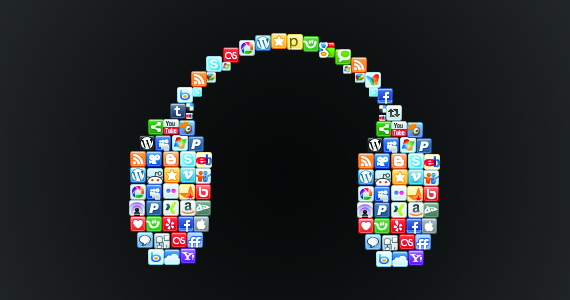Social media monitoring is a tough cookie to crack. It’s important to know what’s being said about your business, but it’s also daunting; who is saying what? Is what you’re doing reaching people? And most importantly, is what you’re doing getting you the results you need? There’s a lot of data involved in social media, but there are ways to make sense of all of the fuzz and use it to answer the most important questions. Here’s our version of Social Media Monitoring 101 to get you started on unpacking the monster.

The ‘simple’ stuff
Social mentions are what users are saying about you on social media. You might like to track mentions of your brand name, your industry, your competitors’ brands, or associated keywords. To use mentions effectively, first you need to establish a baseline time period (weekly is a manageable count) to work out a typical volume. Record this benchmark so you know how your growth is tracking over time.
Next, you want to find out what time of day those mentions at their highest? What demographic is talking about you? What are they saying? Different parts of your company can use this information in different ways:
- Your social media team will use it to time your posts and delegate a time of day that your community manager needs to be online.
- Your public relations team will assess spikes in brand mentions – it could be that a lot of great things are being said about your brand which you should amplify, or nasty mentions might be unravelling and you’ll want to nip that in the bud.
- Your product team should analyse mentions to understand what the public like and dislike about your product so they can amend it accordingly.
- Your marketing team should use mentions to track whether product launches and other campaigns are successful.
Reach and impressions
What’s the difference between reach and impressions, you ask? Put simply, your reach is the number of individual people your content has, well, reached. A bit like unique impressions. For example, Facebook defines reach as “the number of people who saw your post” and considers a post to reach someone if it appears in that person’s newsfeed. Impressions are the number of times a post from your Page is displayed, whether it’s by the same person or not i.e. people may see multiple impressions of the same post. Impressions measure your ability to expose people to your content on Facebook and can help you understand not just how many users you’re reaching, but how frequently those users are seeing your posts, or content associated with your page.
Measuring these metrics is simple; most social platforms have superb analytics tools. On Facebook, visit your Insights page to get receive your reach but you’ll need to dig a little deeper and export a report to retrieve your impressions data. You’ll find your Twitter impressions data on Twitter’s analytics page, likewise with LinkedIn, and although Instagram doesn’t have its own analytics platform, sites such as Iconosquare will do a pretty decent job of it for you.
The emotional stuff
Sentiment Analysis is basically looking into the emotion behind a social media mention. Sentiment adds context to social conversations. Without it, measuring mentions could be misleading. Say you receive 100 mentions on Twitter and you jump up and down in your seat. Then you realise 99 of those mentions were negative. You sit down. Now.
There are hundreds of monitoring tools out there that will do the sentiment hard graft for you (Sprout Social, Trackur, UberVU to name a few), but these are often expensive and often ineffective in New Zealand. Why? Because, well, we’re sarcastic beings. We literally mean what we say on social media probably about 50 per cent of the time. We use funny wordz, too. We’re also tiny – although more than half of our population is on Facebook, this only equates to 2.8 million people. Any data analyst will tell you that the larger the field of data, the better. Another curve ball is that Facebook doesn’t allow us to analyse the sentiment of paid posts and advertising, so we can’t track your entire Facebook presence.
The most effective way to carry out Sentiment Analysis, we’re sorry to say, is manually. It’s a significant time commitment – analysing each individual mention and deem it positive, negative or neutral – but you’re fishing in a small pond (comparatively speaking).
Like all good things, social media monitoring is always evolving. Tools, analytics and insights are updated regularly so it’s important that you stay on top to answer your brand’s most important questions.
By leaving a comment you agree with the storage and handling of your data by this website. You can learn more about how we handle you comment information in our Privacy Policy. We are using Akismet to reduce comment spam. Learn how they process your comment data.